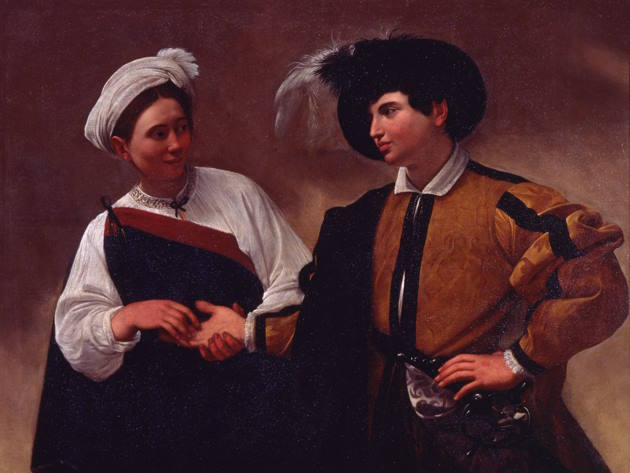
The exhibition Goya and Caravaggio: truth and rebellion at the Santa Petronilla hall of the Capitoline Museums highlights, placing them side by side, two masterpieces by two great masters: the Buona Ventura (Good Fortune) (1597) by Michelangelo da Caravaggio and El Quitasol (The Parasol) (1777) by Francisco Goya, on loan from the Prado National Museum in Madrid.
The two artists, introducing important iconographic and stylistic innovations into the figurative language of their works, were admirable interpreters of the society of their time. Thanks to the exhibition in fact, many similarities can actually be found between the two works, despite the fact that they are about 180 years apart: both paintings belong to their youthful period, in both the main subjects are a woman and a man, both describe a scene with particular realism of daily life of the time and, above all, the two works are characterized by a freedom from the iconographic conditioning imposed by academic rules and by a consequent rejection of the stylistic conventions of the time. In fact, if Caravaggio can be considered the first painter to break with the traditions of the past, Goya was a pioneer of modern art.
Goya's painting, after its only appearance in the capital at the National Gallery of Ancient Art in 2000, was one of the preparatory cartoons for the cycle of tapestries intended to decorate the dining room of the Palazzo del Prado in Madrid, the hunting lodge of the princes of Asturias, that is, the future king Charles IV and his wife Maria Luisa of Parma. The subject, which shows a scene and figures inspired by the real world and contemporary Spanish society - and not hunting themes or allegorical compositions as the Flemish Nordic tradition wanted - goes well with the absolute freedom of invention. The girl whom her fiancé protects from the sun with a parasol, a fashionable object in the 18th century, is in fact a maja, a woman of the people, who wears an elegant French-style dress that was used in Spain on holidays.
The protagonists of the painting, however, are the light and bright colours, and reveal Goya's knowledge of ancient painting, in particular of Venetian Renaissance painting, if not also of Caravaggio's Buona Ventura, seen by the Spanish painter a few years earlier (in 1770-1771), when he came to Italy and resided in Rome, where he attended the Scuola del Nudo (School of nude) in Campidoglio in whose famous Gallery Caravaggio's canvas was preserved.
Photo: Michelangelo Merisi da Caravaggio, Buona Ventura, 1597, oil on canvas, cm 115 x 150, Rome, Capitoline Museums, inv. PC 131
Informations
Dal 12 gennaio al 25 febbraio 2024
Tutti i giorni ore 9.30-19.30
Ultimo ingresso un'ora prima della chiusura
CONSULTA SEMPRE LA PAGINA AVVISI prima di programmare la tua visita al museo.
 Condividi
Condividi











































